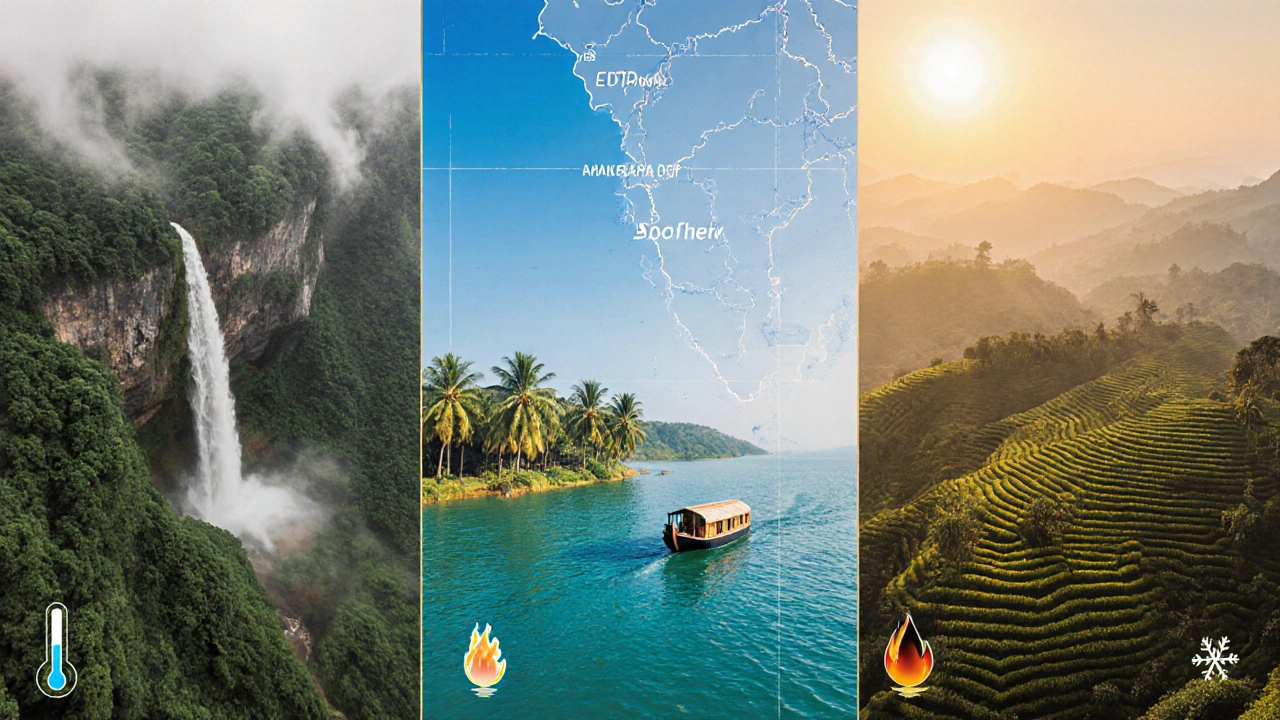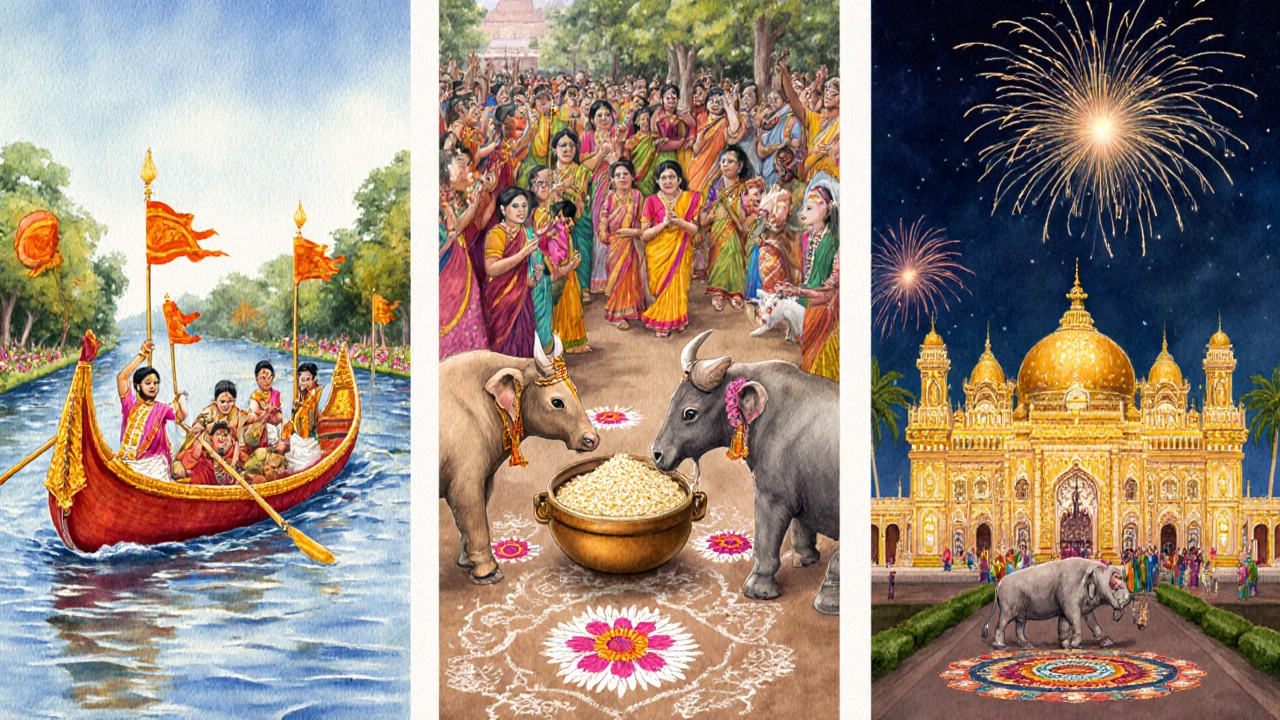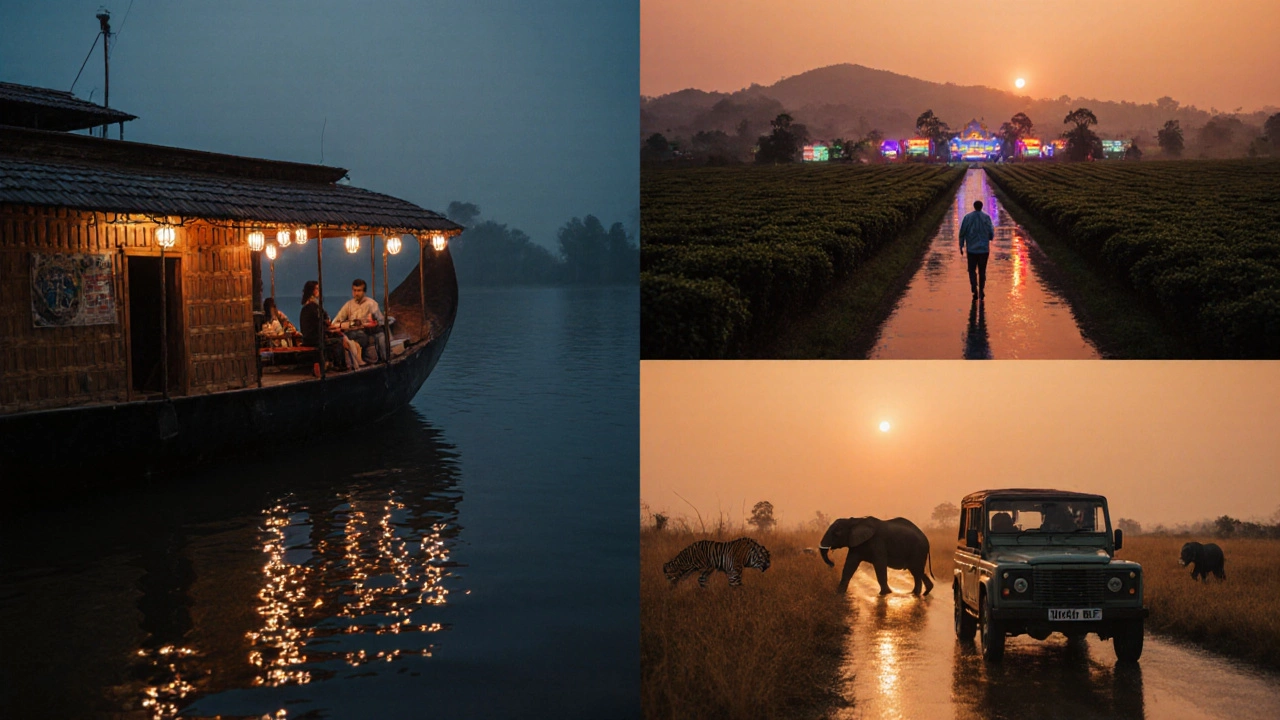When's the Perfect Time to Explore Southern India?
 Oct, 14 2025
Oct, 14 2025
Southern India Travel Time Calculator
Find Your Perfect Travel Window
Select your destination, interests, and dates to discover the best months for your trip.
Your Perfect Travel Window
Key Takeaways
- Late October to early March offers pleasant weather across most of Southern India.
- Coastal Kerala and Tamil Nadu are ideal from November to February, while the interior hills are comfortable year‑round.
- Major festivals like Onam, Pongal and Ugadi provide cultural immersion but attract crowds.
- If you love wildlife, plan a visit to national parks during the dry season (December‑March).
- Bring light layers for evenings in the hills and rain gear for the monsoon pockets.
Wondering the best time to visit southern India? The region’s climate swings between sizzling summer, monsoon showers and mild winter, and each state has its own sweet spot. Below is a practical, down‑to‑earth guide that lets you match weather, festivals and activity preferences without drowning in vague averages.
When you think about tropical getaways, Southern India is the region that includes the states of Kerala, Tamil Nadu, Karnataka, Andhra Pradesh and Telangana, known for its coastline, hills, temples and vibrant festivals often tops the list.
Climate Overview: What the Weather Actually Does
India’s monsoon system dominates the south. From early June to late September, the southwestern monsoon brings heavy rain to the coastal belt and the Western Ghats. After the rains retreat, a dry, crisp winter stretches from November to February, with daytime highs in the mid‑80s°F (28‑30°C) and evenings that can dip to the low 60s°F (16‑18°C) in hill stations. Summer (March‑May) pushes temperatures above 95°F (35°C) along the plains and beaches, but the interior plateaus stay a touch cooler.
Understanding the role of Monsoon is a seasonal wind-driven rain pattern that typically arrives in Southern India in early June and recedes by late September, delivering the bulk of the annual rainfall helps you decide whether you want lush greenery and waterfalls or dry, sunny streets for sightseeing.

State‑by‑State Seasonal Guide
Each state offers a slightly different window of comfort. Below is a quick reference table, then we’ll break down the nuance.
| State | Peak Comfort (°F) | Best Months | Festival Highlights |
|---|---|---|---|
| Kerala | 75‑85 | Nov‑Feb | Onam (Aug‑Sep) |
| Tamil Nadu | 80‑90 | Oct‑Mar | Pongal (Jan), Tamil New Year (Apr) |
| Karnataka | 70‑85 | Oct‑Mar | Ugadi (Mar‑Apr), Mysore Dasara (Oct) |
| Andhra Pradesh | 75‑90 | Oct‑Feb | Sankranti (Jan), Ugadi (Mar‑Apr) |
| Telangana | 75‑90 | Oct‑Feb | Summer Festival (May), Bathukamma (Oct‑Nov) |
Kerala: God's Own Country
Kerala’s backwaters and hill stations (Munnar, Wayanad) bloom after the monsoon, but the best blend of cool weather and clear skies arrives in November through February. Daytime highs hover around 80°F (27°C), perfect for houseboat cruises and beach walks. If you chase the cultural buzz, schedule around Onam is a ten‑day harvest festival celebrated in August‑September with elaborate feasts, boat races and traditional dances. Expect crowds and higher hotel rates during the festivities, but the visual payoff is worth it.
Tamil Nadu: Temples, Beaches and Spice
The coastal stretch from Chennai to Kanyakumari stays sunny most of the year. However, the sweltering heat of May‑June can make temple visits uncomfortable. Aim for October to March, when temperatures dip into the low 80s°F (27°C) and the air feels fresh. This window also aligns with Pongal is a four‑day harvest festival in mid‑January marked by rice dishes, bull‑taming events and kolam art, celebrated across the state with fireworks and community feasts.
Karnataka: From the Western Ghats to the Deccan Plateau
Coastal Karnataka (Mangalore, Gokarna) follows the same monsoon rhythm as Kerala, while inland cities like Bangalore and Mysore enjoy a milder climate year‑round. The sweet spot is October to March, when days are pleasant and evenings can get a bit chilly-bring a light sweater for night‑time strolls in Mysore’s palace grounds. The state’s biggest cultural highlight is Mysore Dasara is a ten‑day royal celebration in late September/early October featuring processions, music and illuminated palaces. It draws visitors from across India, so book accommodations early.
Andhra Pradesh & Telangana: Contrasting Coasts and Plateau
Both states share a dry, sunny winter that’s ideal for exploring the historic sites of Hyderabad, the beaches of Visakhapatnam, or the cave temples of Hampi (Karnataka border). The period from October through February keeps daytime highs in the 80‑90°F (27‑32°C) range, while nights can be pleasantly cool, especially in the Deccan plateau.
Key festivals to consider: Sankranti is a pan‑Indian harvest celebration in mid‑January marked by kite flying, sweet treats and community gatherings and Bathukamma is a floral festival celebrated over nine days in October‑November in Telangana, featuring colorful flower stacks and folk dances. Both offer a vibrant cultural snapshot but also bring more visitors to major city centers.
Festival Calendar: Timing Your Trip for Culture
Travelers often ask whether to schedule around festivals. The answer depends on your tolerance for crowds. If you love immersion, plan to be in the state during its flagship celebration-just be ready for higher prices and packed transport. If you prefer solitude, aim for the shoulder months (late September or early April) when the weather stays good but the crowds have thinned.

Practical Tips for Each Season
- Winter (Nov‑Feb): Pack a light jacket for hill stations and evenings. Sunscreen is still a must on the beaches.
- Post‑Monsoon (Oct‑Nov): Expect occasional showers, especially in the Western Ghats; bring a compact rain poncho.
- Summer (Mar‑May): Stay hydrated, schedule outdoor activities early in the day, and opt for water‑based attractions.
- Monsoon (Jun‑Sep): Ideal for photographers chasing waterfalls, but road travel can be slow. If you do travel, choose well‑maintained highways and check weather alerts.
Sample 10‑Day Itinerary (Late November)
- Day 1‑2: Arrive in Kochi (Kerala). Explore Fort Kochi, watch a Kathakali performance.
- Day 3‑4: Cruise the backwaters of Alappuzha. Sunset over the water is unforgettable.
- Day 5‑6: Head to Munnar for tea‑plantation hikes-cool weather and misty mornings.
- Day 7: Fly to Bangalore (Karnataka). Wander Cubbon Park and Sample South‑Indian street food.
- Day 8: Day‑trip to Mysore. Catch the illuminated Dasara preparations if the timing aligns.
- Day 9‑10: Finish in Chennai (Tamil Nadu). Relax on Marina Beach and visit Kapaleeshwarar Temple before heading home.
This route balances coastal charm, hill station serenity and urban culture while staying within the most comfortable weather window.
Frequently Asked Questions
When is the cheapest time to travel to Southern India?
The shoulder months of late September and early April often offer lower hotel rates and fewer tourists while still providing decent weather. Keep an eye on local festival calendars, as prices can spike even during off‑peak weeks if a major celebration occurs.
Do I need a visa to travel within Southern India if I’m from Canada?
Canadian citizens need a tourist e‑Visa for any entry into India, including all southern states. The e‑Visa is valid for 60 days and allows multiple entries, which is handy if you plan to hop between Kerala and Tamil Nadu.
What clothing is appropriate for temple visits?
Both men and women should wear modest attire-no sleeveless tops or shorts. Light cotton shirts, long trousers or ankle‑length skirts work well. Carry a scarf to cover your shoulders if you’re entering more traditional shrines.
Are there wildlife safaris worth doing in the south?
Yes. Bandipur and Mudumalai National Parks in Karnataka are prime for spotting tigers and elephants during the dry season (December‑March). In Kerala, Periyar Wildlife Reserve offers boat safaris where you can glimpse herd of elephants drinking at the lake.
What’s the best way to get around between states?
Domestic flights save time for long distances (e.g., Kochi to Bangalore). For shorter hops, Indian Railways’ Express trains are comfortable and affordable. Buses are plentiful, but traffic in major cities can be chaotic, so consider ride‑share apps for intra‑city travel.